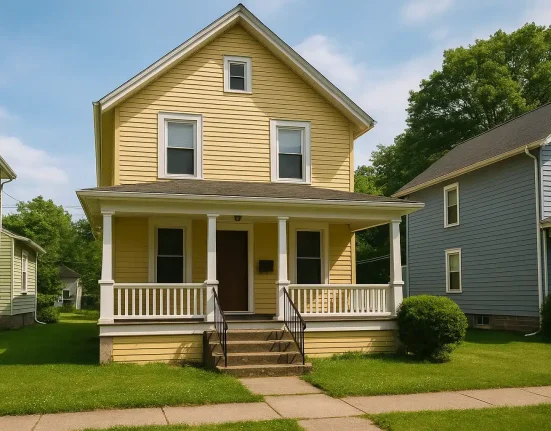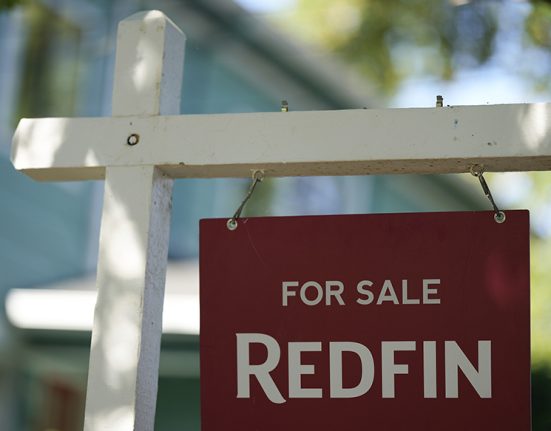In this story, we’ll break down the top mortgage lenders and how buyers can qualify for the lowest … More
Is the housing market finally tilting in buyers’ favor? The latest numbers suggest it is, but getting a good deal still depends on more than just timing. Mortgage rates can vary significantly from one lender to the next, and the lowest advertised rate isn’t always the cheapest once fees are factored in.
Don’t assume your longtime bank will offer the best deal. It pays—literally—to shop around, compare offers and understand the difference between a loan’s interest rate and its APR, or annual percentage rate. While a lender may advertise a tempting rate, higher fees can significantly increase the total cost of the loan. APR gives you the all-in picture, and it’s what savvy borrowers use to compare.
Forbes Advisor tracks daily mortgage rates, so we’ll show you which lenders are offering the most competitive advertised rates and what you need to know before locking one in.
Related: Find competitive mortgage rates near you through our partner Mortgage Resource Center
What’s Driving This Shift Toward a More Buyer-friendly Market?
For the first time on record, sellers are outpacing buyers by nearly 500,000 nationwide, according to Redfin data from April 2025. That’s a 34% gap, the widest since Redfin began tracking in 2013. Thirty-one of the 50 largest U.S. metros are now buyer’s markets, with the biggest imbalances in Miami, West Palm Beach and Fort Lauderdale, Florida, and Austin, Texas.
According to the National Association of Realtors (NAR), existing-home sales fell 5.9% in March from the previous month and 2.4% year over year. At the same time, unsold inventory is growing and price growth is slowing. These trends could create more opportunity for buyers who’ve been shut out by bidding wars and all-cash offers.
Affordability remains a concern, though.
Median home prices are still high—$431,931 as of April, according to Redfin. However, they’re expected to fall 1% by year’s end.
Meanwhile, mortgage rates have hovered below 7% for five straight weeks.
The average 30-year fixed mortgage rate is 6.89% as of May 29, down from 7.03% a year ago, according to Freddie Mac. That slight dip is good news for buyers; rates are easing after last year’s highs, giving a bit more breathing room. Even a small drop can translate to thousands in savings over the life of a loan, especially for those who shop around and compare offers.
The Mortgage Bankers Association reported that the national median mortgage payment increased slightly in April to $2,186, up from $2,173 the month prior. Despite that, affordability has improved year over year thanks to rising wages and a moderation in home price growth.
In this story, we’ll break down the top mortgage lenders and how buyers can qualify for the lowest rates available.
Top Mortgage Lenders To Consider Now
Forbes Advisor tracks daily mortgage rate updates to help you compare lenders based on where you’re located. Rates change often, based on market trends, lender policies, and your financial profile.
Here are some of the best mortgage lenders according to a Forbes Advisor analysis based on a variety of factors, including interest rates, accessibility, customer service, loan options, time to close and more:
- New American Funding: Flexible qualification requirements and loan offerings
- Rocket Mortgage: Flexible borrowing options with low-down-payment options
- Rate: Ideal terms for first-time homebuyers, including reasonable credit requirements and low downpayments
Five Ways To Get the Best Mortgage Rate
Credit isn’t the only lever borrowers can pull. From the size of your down payment to the type of loan you choose, there are several strategies that can help you secure a lower mortgage rate and potentially save thousands. Let’s walk through them.
- Check your credit score: A strong credit score can lower your mortgage rate, which in turn lowers your monthly payment and gives you more spending power. Even bumping a rate down by a few tenths of a percentage point can save you tens of thousands of dollars over the life of the loan.
- Save for a bigger down payment. Putting down 20% or more can help you avoid extra fees like private mortgage insurance and get you a better rate.
- Keep your debt low. Lenders look at how much debt you have compared to your income. A lower debt-to-income ratio makes you appear to be a safer bet, which translates into a lower interest rate. Lenders usually want your debt-to-income (DTI) ratio to be 36% or less. To figure yours out, divide your total monthly debt payments by your gross monthly income. For example, if you earn $2,000 and pay $500 in debts, your DTI is 25%.
- Shop around. Don’t go with the first rate you’re offered. Freddie Mac found that just getting one extra quote can save you as much as $1,200 a year. Find quotes from the best mortgage lenders here.
- Choose the right loan term. Short-term loans usually have lower rates, but they also come with higher monthly payments. Talk to your lender about what’s best for your budget.
Even in a tough market, small moves can make a big difference. Know your options and ask questions, because getting a better rate starts with being informed.
Related: Find competitive mortgage rates near you through our partner Mortgage Resource Center







